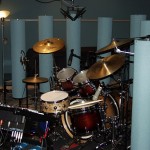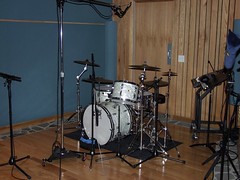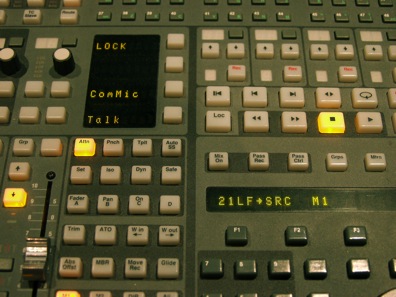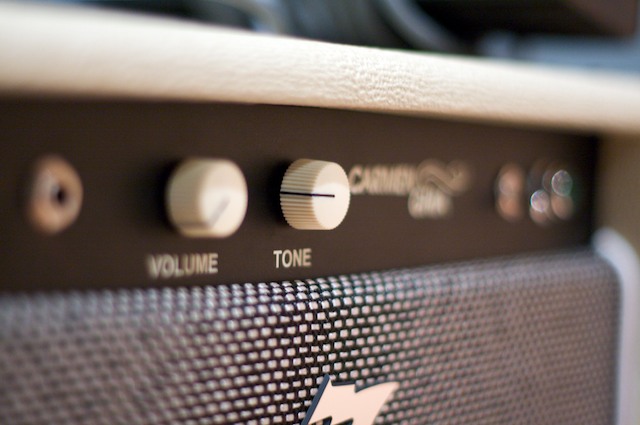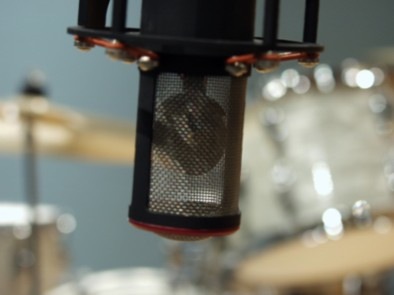Shells and Coverings
Going back thousands of years, the traditional drum shell material has been wood. It’s musical, depending on the type, it’s easy to work with and it’s relatively inexpensive. Metals have also been used and since the 1970’s, plastic. Let’s look at plastics first.
Acrylic
Though an experimental Plexiglass set was made by Bill Zickos in 1959, they were commercially introduced a decade later. In 1969, Zickos sold its first professional kit to Ron Bushy of Iron Butterfly of “In-A-Gadda-Da-Vida” fame. Fibes and Ludwig soon jumped in the game in the early 1970s. These acrylic shells weren’t marketed as a sonic improvement over wood, they just looked cooler. They do have a particular sound, which some have come to appreciate. Acrylic shells are made of hard, dense plastic, and when paired with plastic heads, well, you can imagine the sound. Remember, the more rigid and dense a shell is, the less it will vibrate; thus, it’s more likely that the sound from the drum head will be the predominate sound of the drum.
Fiberglass and Resins
Larrie London, top session drummer in the 1980s, preferred the sound of thin, fiberglass shells and when on stage he used a wrap-over-fiberglass kit. But for the studio, Pearl made unwrapped fiberglass kits for him. Without the wrap, the drums had a bit more tone and the sound appealed to his ears, especially when close mic’ed in the studio. Bright and loud, these were very thin shells (single head toms), considerably thinner than wood. Proximity effect from close mic’ing and the brighter shells gave Larrie the recorded tone he preferred.
Metals
Metals are used primarily on snare drums and offer unlimited tonal choices for what most people regard as the signature sound for any drummer. Choices are varied, such as copper, brass, aluminum, steel, hammered, etc.. Each metal has its own tonal characteristic. Entire metal kits are not that popular. Carl Palmer famously had a stainless steel kit made in the seventies. It was very heavy and I’m sure roadies hated it. But metals are great for signature snare sounds. I find for studio work it makes sense to have many snares on hand to find the right one for each tune or project.
Wood
Wood is the traditional choice for most drummers. Modern manufacturing allows perfectly formed shells out of a wide variety of woods, all chosen for their musical ‘notes’ (see the Janka Hardness Test in part 2 of this series). Modern production also allows for thinner and thinner shells; lighter and stronger, not needing the reinforcement rings of yesteryear. Modern shells are manufactured out of thin, wood veneers, as few as 3-plys, glued and pressed to form a molded plywood shell. Shells made of solid wood, thin and steam-bent, are popular with some. Slingerland ‘Radio Kings’ come to mind. The wood grain in steam bent drums runs horizontal. Some are making ‘stave’ drums; thick wood wedges glued in a circle and machined, kind of like how old barrels were made. Modern manufacturing allows thinner shells than stave drums used to have, the wood grain is vertical, which allows a stronger bearing edge and better transfer from the head to the shell. The resulting drum is heavier than a plywood drum.
Coverings
From the early days of modern drum manufacturing, shell coverings (wraps) such as sparkles, glitters or pearls, have allowed the drummer to show off his style and personality while protecting the drum during transport.
Does the wrap affect the sound? Yes.
The wrap is layer of dissimilar material toning down the vibration of the shell. A modern approach, instead of a wrap, is a painted surface. But let’s face it, if you’re a hard-gigging drummer a beautiful wrap keeps your drums and you looking sharp. And, for the most part, the recorded drum sounds we know and love are sounds from wrapped drums. I would say if your primary use for a kit is the studio, then don’t compromise the sound in any way; chose an unwrapped kit. But if you are a gigging drummer with occasional studio work you need a kit that will hold up to traveling. Chose a wrapped kit.
Next, where the rubber hits the road: bearing edges.
Bearing Edges, Reinforcement Rings and Other Things
Transferring the energy of a strike on the drumhead to the shell is the job of the bearing edge. I found a Federally funded research paper on this comparing different bearing edges (really!). Scientists compared 45 degree on the edge, 45 degree centered and 45 degree on edge with slight round over. Though the study was implemented by scientists (flawless people), there were flaws in the report (in my opinion), but I found the essence of the study to be factual, and a good explanation of the function of bearing edges. The report concluded the 45 degree in the center of the shell transferred the most energy, though they didn’t know why. I believe when the 45 is in the center of the shell, the energy transfers from the center towards the edges quickly and evenly.
Older drums had reinforcement rings to stabilize the shell. This was necessary to keep drums in round. Bearing edges were cut into the rings and tended to be rounded with more surface area in contact with the head than most modern drums. The result is a warm, rounder tone as more energy is transferred to the shell.
Now this is the biggest pet-peeve I have with drum companies and bearing edges. Most heads seat on the bearing edge on the collar of the head. The collar is the rounded bend in the head. This bugs me like nothing else. It’s as if there’s a communication breakdown between drum makers and head manufacturers. Is there a solution?
There are three I can think of. First—and this is the best one—drum companies should undersize their shells. None, that I know of, undersize. This would open the doors to the best tonal possibilities no matter the head choice. Second, if a drum company can’t (won’t) undersize the shell, then cut the bearing edge from the outside of the shell inward. Third, drumhead companies change the dimensions on their heads. I thought this would never happen but recently Evans stepped up to the plate and introduced Level 360 which begins to address the collar problem.
There has been a lot of improvement on how heads connect to the bearing edge. Lug casings are lighter, stronger, and less resonant. Rims, especially cast rims, are an attempt to keep the head, collar, and bearing edge in rigid agreement. In an attempt to keep the shell at maximum resonance, contact with tone-dampening lug casings has been minimized. Rim mounted toms are another attempt to keep the shell free floating. Rim mounts do allow the drum to move (up and down) when hit. A mic on a studio stand doesn’t move. Though the tom may move only a half inch or so, when closed mic’ed a couple of inches away from the drum, it’s a substantial amount. A mic fixed to the rim of the drum moves with the drum, but vibrations from the shell are unnecessarily transferred to the mic capsule. While this configuration is ok for a live situation, it’s not good for the studio. In a studio situation, the type of rim mount is an important detail.
Lug casings and the art of drums
How can you tell who’s a serious drummer? By their admiration of the drum-set as art. And nothing is more artistic and different about drum companies than the design of the lug casing. I love the classic art deco designs of Ludwig and Slingerland and think the Ludwig casing is probably the most artistic of the bunch. I’m not a real big fan of the Camco (DW) turret but it definitely beats the latest Premier, Pork Pie (oink!), Pearl, Tama, bla, bla…
But wait, we’re talking about sound, not looks!
In order to allow the shell to vibrate freely, the lug casings need to have as little contact with the shell as possible and they need to be the lightest mass possible. True, but those vibration dampening lug casings have been a part of the drum since right after rope tensioning and are an integral part of the drum sounds on countless classic recordings. In the big picture, you judge if it is important to you and your sound to have low-mass casings.
Some final thoughts. . .
I saw a major rock act on TV the other day and when they showed a close-up of the drummer, I could see the snare wires duct-taped to the bottom head. Also, there were several large tape patches on all the top tom heads. What did that set sound like? If you’ve read this series of blogs you can deduce what it sounded like. Was it wrong? Well, not if it serves the music in a musical way. Everything has to serve the music. Would drummers consider this guy’s approach a great drum sound? No, of course not. Though in a famous band, this guy isn’t considered a great drummer. Is there a correlation?
Modern drum companies are making great strides to build better sounding drums. Drummers are demanding more attack, tone and sustain. Meanwhile, modern music arrangements are getting more dense and crowded. The average loudness in modern recordings is getting higher and higher with the heavy-handed use of compressors, lots of compressors. Drum transients are the major victim. This may be the real casualty of the loudness wars.

